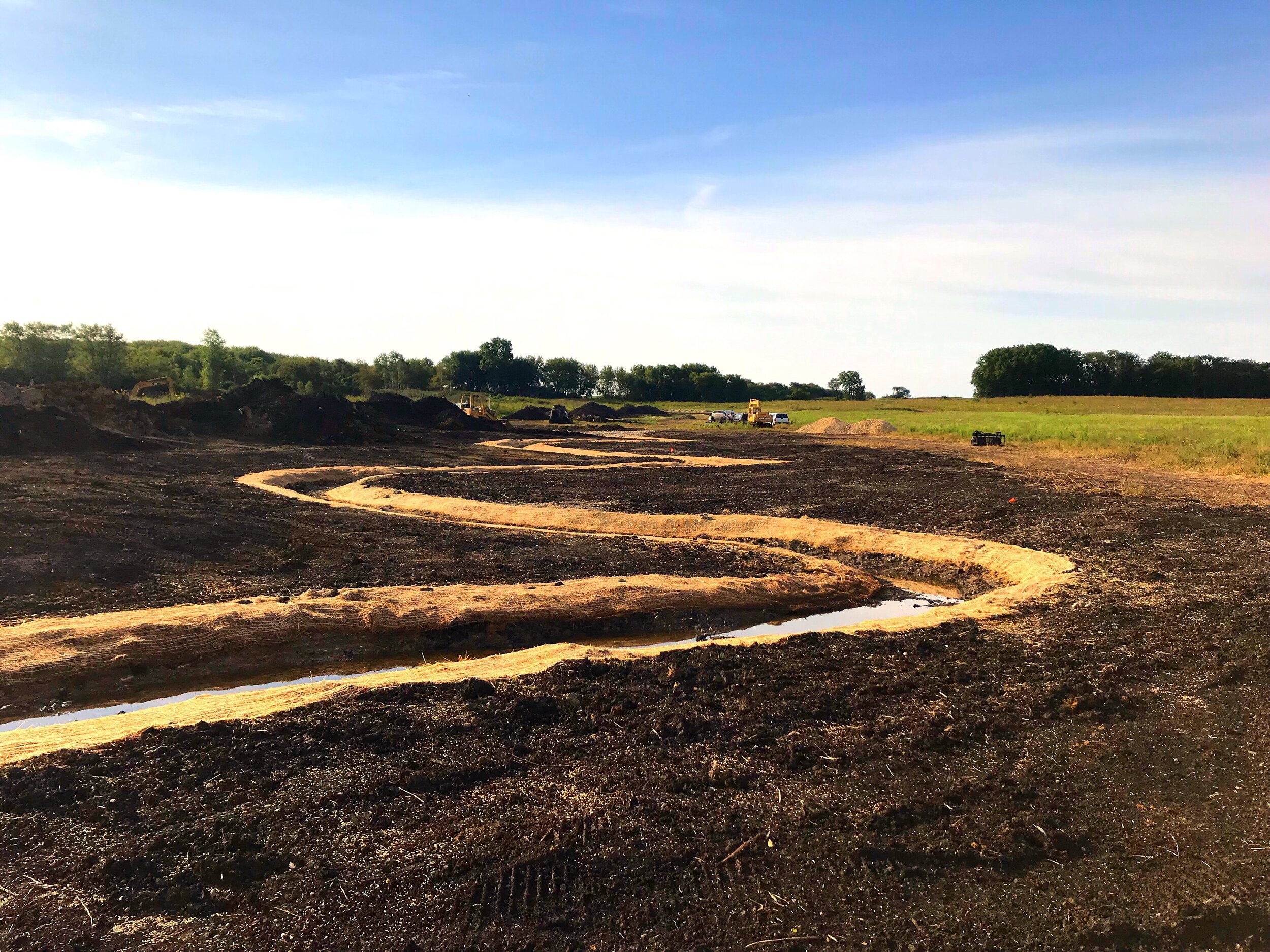Projects

School Springs Stream Mitigation
McHenry County Conservation District’s (MCCD) Glacial Park is home to both a wetland mitigation bank and a stream channel mitigation bank. This particular site was previously home to a series of agricultural ditches, discharging to the Nippersink Creek at the northern extent of the site.
Historical aerial imagery of the site, prior to agricultural use-associated channelization, was used as a guide to design the spatial pattern for channel restoration of this portion of stream channel. Additionally, EPA’s Functional Loss Determination quantification method was used to guide assessment of existing conditions and representative functioning channel segments to guide design.
Determination of channel function was derived for existing reaches, reference reaches, and designed reaches to quantify the improvement in channel hydrologic, hydraulic, geomorphologic, physiochemical, and biologic components. Hydrologic and hydraulic models, meander patterns, riffle to pool structure and spacing, relative discharge ratios, field measurement, and field surveys were used to quantify the recovery of channel function. Calculated and measured hydrologic elements, including channel forming, bankfull, peak, and critical duration discharges were used to guide hydraulic design, including bank height ratios, entrenchment ratios, channel stage capacities, stream power, bankfull velocities, and bed sheer stresses.
Permit and construction documents were prepared to obtain required permits, fulfill the EPA approved mitigation bank prospectus, and guide construction. Staging design for this project was critical, as intermediate staging areas were required to stockpile material following new channel excavation and prior to filling the decommissioned channel to guide flow reintroduction.
During construction, historical bed material was uncovered in the mapped locations of old channel pathways and was incorporated into grade control and habitat riffles. Additionally, field surveys have confirmed that fish and aquatic invertebrate communities native to this class and structure of tributary channel have returned and are thriving.



